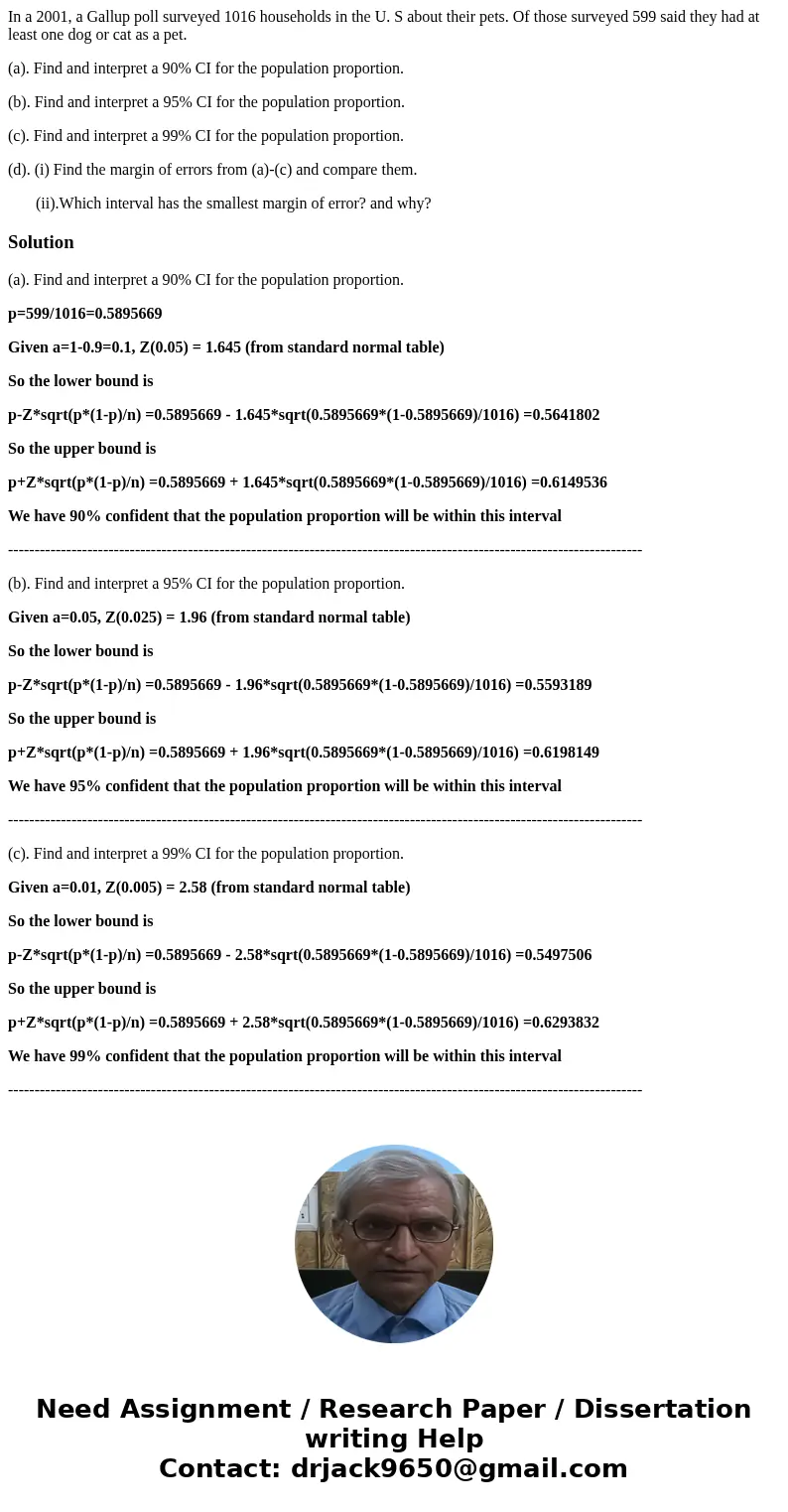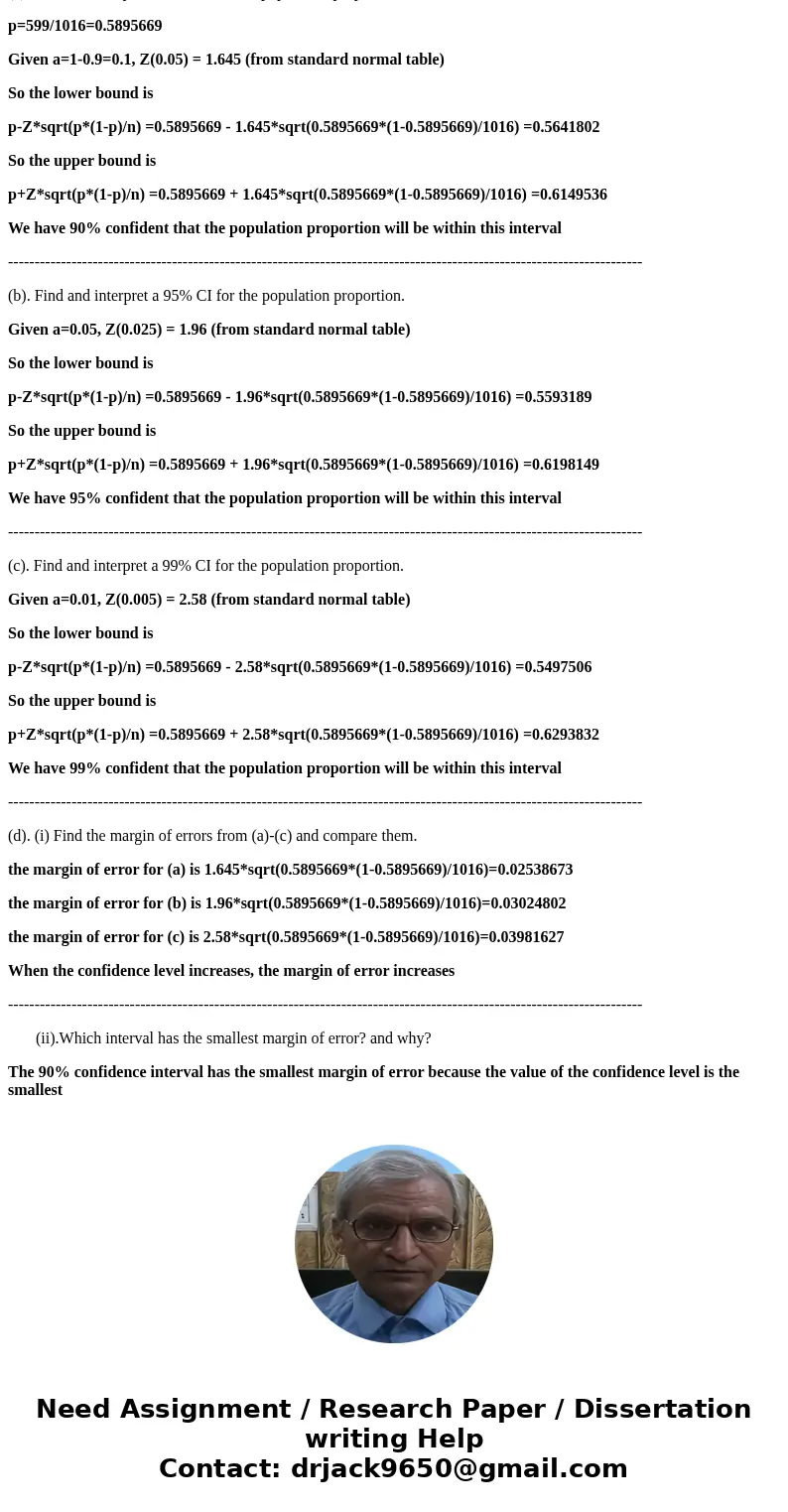In a 2001 a Gallup poll surveyed 1016 households in the U S
In a 2001, a Gallup poll surveyed 1016 households in the U. S about their pets. Of those surveyed 599 said they had at least one dog or cat as a pet.
(a). Find and interpret a 90% CI for the population proportion.
(b). Find and interpret a 95% CI for the population proportion.
(c). Find and interpret a 99% CI for the population proportion.
(d). (i) Find the margin of errors from (a)-(c) and compare them.
(ii).Which interval has the smallest margin of error? and why?
Solution
(a). Find and interpret a 90% CI for the population proportion.
p=599/1016=0.5895669
Given a=1-0.9=0.1, Z(0.05) = 1.645 (from standard normal table)
So the lower bound is
p-Z*sqrt(p*(1-p)/n) =0.5895669 - 1.645*sqrt(0.5895669*(1-0.5895669)/1016) =0.5641802
So the upper bound is
p+Z*sqrt(p*(1-p)/n) =0.5895669 + 1.645*sqrt(0.5895669*(1-0.5895669)/1016) =0.6149536
We have 90% confident that the population proportion will be within this interval
------------------------------------------------------------------------------------------------------------------------
(b). Find and interpret a 95% CI for the population proportion.
Given a=0.05, Z(0.025) = 1.96 (from standard normal table)
So the lower bound is
p-Z*sqrt(p*(1-p)/n) =0.5895669 - 1.96*sqrt(0.5895669*(1-0.5895669)/1016) =0.5593189
So the upper bound is
p+Z*sqrt(p*(1-p)/n) =0.5895669 + 1.96*sqrt(0.5895669*(1-0.5895669)/1016) =0.6198149
We have 95% confident that the population proportion will be within this interval
------------------------------------------------------------------------------------------------------------------------
(c). Find and interpret a 99% CI for the population proportion.
Given a=0.01, Z(0.005) = 2.58 (from standard normal table)
So the lower bound is
p-Z*sqrt(p*(1-p)/n) =0.5895669 - 2.58*sqrt(0.5895669*(1-0.5895669)/1016) =0.5497506
So the upper bound is
p+Z*sqrt(p*(1-p)/n) =0.5895669 + 2.58*sqrt(0.5895669*(1-0.5895669)/1016) =0.6293832
We have 99% confident that the population proportion will be within this interval
------------------------------------------------------------------------------------------------------------------------
(d). (i) Find the margin of errors from (a)-(c) and compare them.
the margin of error for (a) is 1.645*sqrt(0.5895669*(1-0.5895669)/1016)=0.02538673
the margin of error for (b) is 1.96*sqrt(0.5895669*(1-0.5895669)/1016)=0.03024802
the margin of error for (c) is 2.58*sqrt(0.5895669*(1-0.5895669)/1016)=0.03981627
When the confidence level increases, the margin of error increases
------------------------------------------------------------------------------------------------------------------------
(ii).Which interval has the smallest margin of error? and why?
The 90% confidence interval has the smallest margin of error because the value of the confidence level is the smallest


 Homework Sourse
Homework Sourse